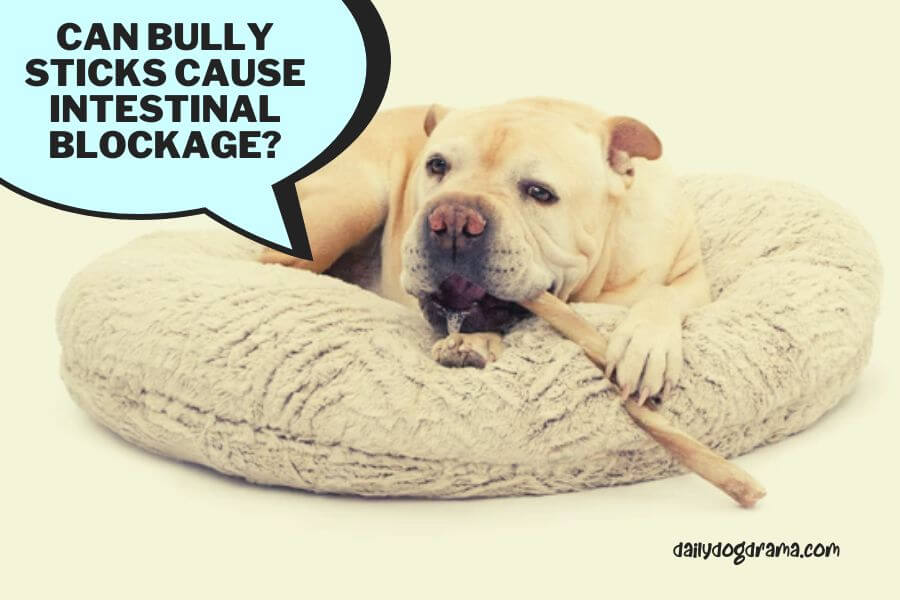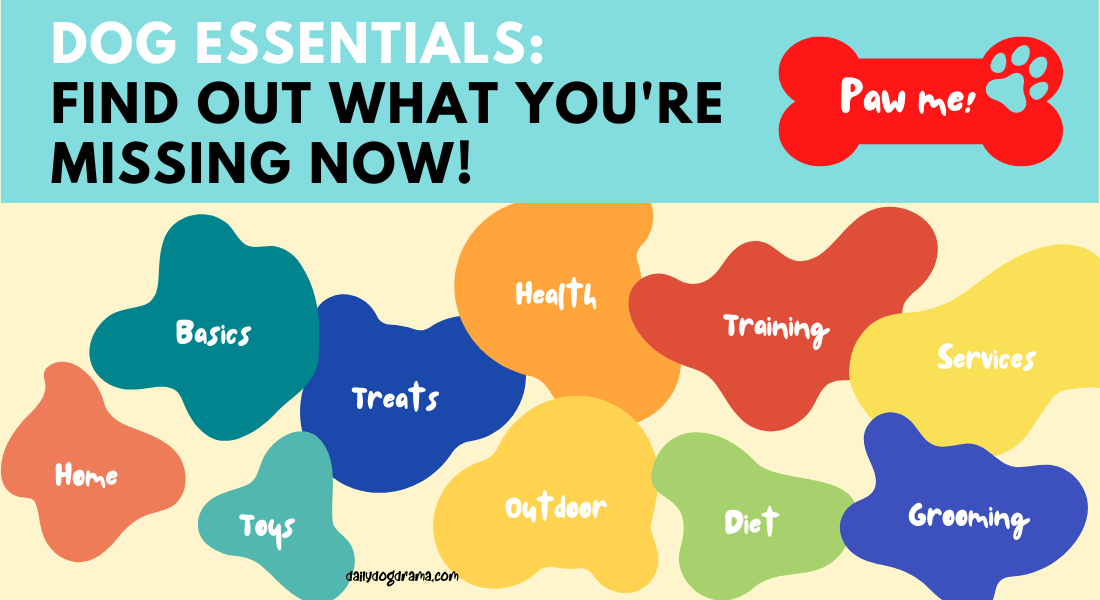Do you know what DOG ESSENTIALS you are missing out? Find out now!
Zack Keithy, our author, is a certified veterinarian technician (UC Blue Ash) for over 6 years (contact him here). The articles written here are based on his expertise and experience, combined with a review by our expert vet reviewers including Dr M. Tarantino. Learn more about us here.
Bully sticks, also known as pizzle sticks, are a popular chew treat for dogs.
But can bully sticks cause vomiting in dogs?
It is possible that bully sticks can cause some dogs to vomit, although this is not a common occurrence. They may have an allergic reaction to the ingredients in bully sticks, or the fact that they are high in protein, which a sudden intake can lead to vomiting.
In this blog post, we will explore the potential effects of bully sticks on dogs, tips for choosing one, and a few potential alternatives to bully sticks for your furry friend.
Medical Questions? Talk to a Veterinarian 24/7.
Connect one-on-one with a licensed vet who will answer your questions in minutes.
*Article may contain affiliate links to retailers like Amazon and Chewy. Learn more on our disclosure page.

- Can Bully Sticks Make My Dog Sick?
- Why Does My Dog Throw Up After Eating a Bully Stick?
- Are Bully Sticks Hard on Dogs' Stomachs?
- How to Safely Give Your Dog a Bully Stick?
- Can Bully Sticks Cause Intestinal Blockage?
- What Are the Signs of Intestinal Blockage in a Dog?
- Alternatives to Bully Sticks for Dogs
- Frequently Asked Questions (FAQs)
- In Conclusion: Can Bully Sticks Cause Vomiting?
Can Bully Sticks Make My Dog Sick?
Any time you give a new food or treat to your dog, there is a chance that he or she may experience some digestive distress.
Offering your dog bully sticks that are of great quality and those that have been properly prepared will effectively reduce the likelihood they would get sick.
If your dog does experience an upset stomach, it may be due to:
- A sudden introduction of a new food or treat.
- Bully stick getting contaminated prior to giving your dog
- Unclean processing facilities could have led to bacterial contamination.
Have you ever wondered who invented bully sticks?
Why Does My Dog Throw Up After Eating a Bully Stick?
The ingredients in bully sticks can potentially cause an allergic reaction in some dogs, which can result in symptoms like vomiting.
Other times, the bully stick might have been spoiled or contaminated, which can also make a dog throw up.
Lastly, because of the large amount of protein included in bully sticks, your dog may get sick after eating one of these treats, which is why they should not be meal replacements!
Any dog that isn’t used to eating a lot of protein may have stomach distress, diarrhea, or even vomiting as a result.
Are Bully Sticks Hard on Dogs’ Stomachs?
In contrast to certain other chews or snacks, bully sticks are easily digestible by a dog’s body.
For certain dogs, the beef hide in rawhide, for instance, can be challenging to digest.
Bully sticks, on the other hand, are quickly broken down in your dog’s stomach due to their high level of digestion.
How to Safely Give Your Dog a Bully Stick?
Bully sticks are safe to give your dog, but there is a right way to do so.
You should always begin with a slow introduction to get your dog used to them.
This will ensure that your dogs do not end up with an upset stomach or find themselves in a nasty scenario that neither of you wants.
When you see that your dog has no problems with it, you may progressively extend the amount of time they get to chew.
Only use high-quality bully sticks
Needless to say, you need to invest in bully sticks that are made by reputable companies with a good track record.
A bully stick of high quality is completely natural, and it contains neither preservatives nor any other artificial substances.
It may also originate from cows that are allowed to roam free or are fed grass.
This ensures that the protein was developed on a diet that is both healthy and natural.
A few brands we trust are Best Bully Sticks (first choice) and Natural Farm.
Choose the right-sized bully stick
Bully sticks may be chewed on by dogs who already have their full set of adult teeth, typically above 6 months old.
Because of this, they are an excellent outlet for the teething problems that your dog is experiencing.
However, it is extremely crucial to choose the appropriate bully stick size for your doggy to prevent it from becoming a choking hazard.
There are different sizes available and remember, do not let your dog chew on one when it becomes small enough to swallow.
Introduce it slowly
You should gradually include bully sticks into your dog’s diet, just as you would if you were altering her regular food.
This will assist her stomach in adjusting to the new treatment and reduce the likelihood of her being unwell as a result of consuming an excessive amount of food in a short period.
Over time, the frequency of giving your dog a bully stick can be increased to daily.
Supervise at all times
Another useful tip is to maintain constant supervision.
It is recommended that you give her a bully stick to gnaw on for not more than 10 minutes each time.
You may help your dog maintain a healthy mental state and satisfy his or her natural drive to chew while reducing his or her calorie intake.
I personally use an anti-choking device whenever I let my dog chew on one.
Store it properly
When your bully sticks are not being used, be sure to keep them in a dry and cool location.
When there is an excessive amount of moisture and humidity, germs may begin to form on your sticks.
If a stick is only partially used, you can clean it up with a wet towel but remember to let them dry before storing it.
When it is time to use them again, consider refreshing them before giving them to your dog.
Can Bully Sticks Cause Intestinal Blockage?

Because bully sticks are so easily digested, there is a low possibility that they may cause intestinal obstruction.
On the other hand, if your dog swallows huge chunks, this might lead to a blockage in the throat, which in turn can cause your dog to choke.
That is why it is so important to keep an eye on your dog when it is chewing on a bully stick and to remove it before it gets too small to be swallowed.
What Are the Signs of Intestinal Blockage in a Dog?
The signs of intestinal obstruction in a dog are often disregarded as the result of an upset stomach unless the owner has seen the dog swallowing a foreign item.
The following are some of the symptoms:
- Nausea
- Vomiting
- Weakness
- Diarrhea
- Lack of appetite
- Bloating
- Straining or inability to defecate
- Whimpering
- Restlessness
Alternatives to Bully Sticks for Dogs
These tasty chews may not be suitable for every dog and in fact every dog owner (they do stink up quite a bit).
The good news is, there are lots of healthy alternatives too!
Frequently Asked Questions (FAQs)
Are some dogs allergic to bully sticks?
Yes, dogs can become allergic to bully sticks. According to a study, compared to bully sticks made without sodium metabisulfite, products with it had 132 times higher sulfites. These products are capable of triggering an allergic reaction in dogs.
Why do some vets not like bully sticks?
Some veterinarians do not like bully sticks because there is a risk of bacterial contamination. Pathogens such as Clostridium difficile, Staphylococcus aureus (MRSA), and Escherichia coli are very dangerous to dogs.
Can dogs choke on bully sticks?
Yes, dogs can choke on bully sticks. When a bully stick has been bitten down to the point where it can be swallowed, this is when it is most likely to happen. As such, it is highly recommended that feeding be supervised and that the bully stick be removed at this stage.
In Conclusion: Can Bully Sticks Cause Vomiting?
In conclusion, it is possible for bully sticks to cause vomiting in some dogs.
While this is not a common occurrence, some dogs may have allergic reactions to the ingredients in bully sticks, which can cause vomiting and other symptoms.
Additionally, if the bully stick is contaminated or spoiled, it can also cause vomiting.
It is always important to monitor your dog when giving them any new treat, including bully sticks, and to consult with your veterinarian if you have any concerns.
Never let them chew for too long (more than 10 minutes) as excessive chewing on a bully stick might tire them out or cause unnecessary dental problems.
In some cases, it may be best to choose alternative chew treat options that are safer and easier on your dog’s digestive system.
You’ve made it to the end, but I hope it’s not the end of our journey. We want to hear your voice! Share your thoughts, problems, suggestions, or anything related to your dog in the comments section. And don’t forget to join our newsletter today too.




